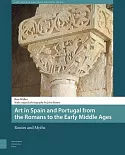In 1215, the year Khubilai Khan (12151294) was born, the Mongols made their first major incursion into North China and initiated a period of extraordinary creativity in the arts that was
encouraged by the confluence of many cultures and ethnic groups. This period lasted approximately 150 years and had its greatest flowering in the Yuan dynasty, founded by Khubilai in
1271 and lasting until 1368.
Xanadu to Dadu is a groundbreaking study of the art and culture produced at this time by the Chinese and by the highly skilled craftsmen from Western and Central
Asia, who were selected for their abilities and brought together in Northern Chinese workshops, where they exchanged ideas, styles, and art forms. The works they produced created a new art
style that would influence the arts of China in all subsequent periods. In the 11 essays included in this volume, art historians discuss the origins of new art forms, daily
life in Yuan China, in particular at the imperial court and in the capital cities of Xanadu (Shangdu) and Dadu (Beijing), and the impact on the arts of the religions practiced at this time,
including Buddhism, Daoism, Christianity, Manichaeism, Hinduism, and Islam. The essays are accompanied by beautifully reproduced color illustrations of artworks from Chinese and
international collections.





















